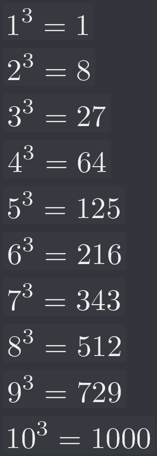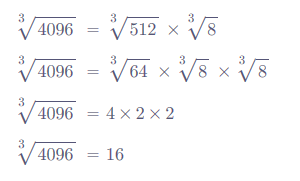I’ve read the previous posts and Gary’s responses, and I still feel like we’ve glossed over the actual “solving it” piece.
The video details each minor interim step to breaking the problem down to 4096^(1/3) in order to get the solution. Then, at 5:51, after the odd spliced in explanation, Ben says “and how do we figure out what 4096 to a third is? Well, you can do that by popping it into your calculator…” Gary’s reply also says “put it into your calculator.”
There’s this build-up of rules and steps, and the final anticlimactic step is “use your calculator.” I obviously could have put “4096^(1/3)” in my calculator (or otherwise googled the cube root of 4096) and saved 7 minutes of video, but I want to know how to do it myself. This is like going on a quest to learn the secret of human flight, and then the final step is “get in an airplane.”



